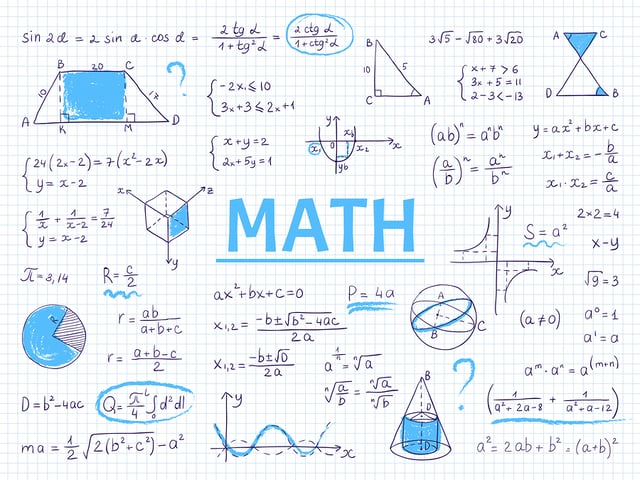
Math You Need to Know for the TEAS® Exam
The TEAS math section covers your knowledge of high school mathematics. Nurses are expected to compute and verify dosages as well as graphical data, so the questions reflect the need for knowledge in arithmetic, measurements, interpretation of graphs, and basic algebra. It is especially important to be able to use these skills in the context of solving real-world problems. Approximately 70 percent of the questions cover arithmetic and algebra, and 30 percent of the questions cover measurement and data interpretation.
Here is a breakdown of the skills you should study:
Arithmetic
- Place value
- Number order and comparison
- Negative numbers, especially in subtraction, multiplication, and division
- Fractions
- Equivalent fractions and simplifying
- Ordering fractions by value
- Conversion of mixed numbers and improper fractions
- Operations with like and unlike denominators
- Decimals
- Percents
- Order of operations
- Estimation and rounding: appropriate use
Algebra
- Constants versus variables
- Simplifying expressions containing variables
- Solving equations by isolating variables
- Problem-solving
- creating expressions and equations
- multi-step problems
- necessary versus unnecessary information
- Ratio and proportions
- Rate of change
- Measurement
- metric units and prefixes
- conversion among metric units
- conversion between metric and standard units
Geometry
- Rectangles, squares, circles, and triangles
- Area, perimeter, and volume
- Cartesian coordinate system
- Slope and intercept of the graph of a line
- Parallel, perpendicular, and transverse lines
- Congruency of geometric figures
- Angles: complementary, acute, obtuse, vertical
Data
- Tables
- Scatterplots
- Line graphs
- Bar graphs
- Histograms
- Circle graphs
Statistics
- Normal distribution curve, skews
- Bimodal and uniform distributions
- Interpreting trends
- Mean, median, mode
- Range, spread, variance, standard deviation
- Covariance and causality
- Response versus explanatory variable
For some great TEAS practice tests other info, check our TEAS Math practice questions and our TEAS Math study guide at Union Test Prep!
Keep Reading

Test of Essential Academic Skills Blog
How to Pass the TEAS Science Section
As a pivotal component of the Test of Essential Academic Skills (TEAS),…

Test of Essential Academic Skills Blog
How Long Should I Study for the TEAS Test?
According to the Bureau of Labor, there are over 3 million registered n…

Test of Essential Academic Skills Blog
Making a Studying Plan for the TEAS Exam
Are you preparing to take the ATI TEAS exam? This important test can be…